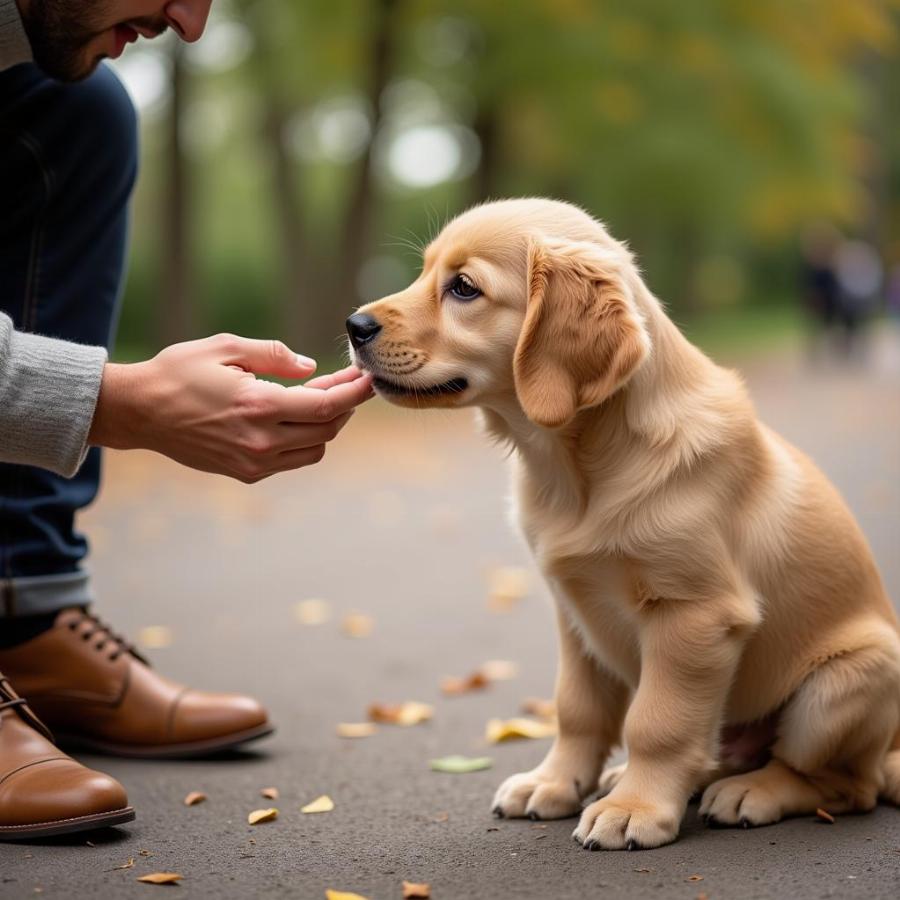The “bubble theory” for dogs, sometimes called “socialization windows,” is a frequently misunderstood concept in the dog world. While it doesn’t involve actual bubbles, understanding this theory can make a world of difference in your furry friend’s happiness and confidence. So, what is the bubble theory for dogs, and why is it crucial for every dog owner to understand?
Debunking the Myth: It’s Not About Fear Periods
The term “bubble theory” can be misleading. It doesn’t mean your dog has a protective bubble that shrinks with negative experiences. Instead, it refers to the critical period of socialization that occurs during puppyhood, typically between 3 and 14 weeks of age. During this time, puppies are most receptive to new sights, sounds, smells, people, and other animals.
Think of it like this: a puppy’s brain is like a sponge, soaking up information and experiences. These early encounters shape their understanding of the world and influence their behavior later in life.
Why Early Socialization Matters
Positive experiences during this crucial period help puppies develop into well-adjusted adult dogs. Exposing them to a variety of stimuli in a safe and controlled manner helps them:
- Build Confidence: Puppies who experience different environments, people, and dogs are less likely to be fearful or anxious in new situations.
- Develop Social Skills: Early socialization teaches puppies how to interact appropriately with other dogs, preventing potential behavioral issues like aggression or fear-based reactions.
- Reduce Stress: Dogs who are comfortable in various settings are less likely to experience stress or anxiety, leading to a happier and healthier life.
Beyond the Bubble: Socialization is Ongoing
While the “bubble” might be most absorbent during puppyhood, socialization shouldn’t stop there. It’s a lifelong process that continues into adulthood. Just like humans, dogs benefit from new experiences and interactions throughout their lives.
For adult dogs, socialization might involve:
- Regular walks in different environments: Parks, city streets, hiking trails.
- Dog park visits (with caution and supervision): Always prioritize safety and monitor your dog’s body language.
- Playdates with familiar, well-adjusted dogs: Choose playmates wisely to ensure positive interactions.
- Continued training and exposure to new stimuli: Keep things interesting and engaging for your dog.
The Role of Positive Reinforcement
Positive reinforcement is crucial throughout the socialization process. When your puppy or dog encounters something new, reward calm and confident behavior with praise, treats, or toys. This helps them associate new experiences with positive feelings, making them more likely to approach future encounters with curiosity rather than fear.
 Dog Meeting New Person
Dog Meeting New Person
Signs of a Poorly Socialized Dog
If a dog misses out on crucial socialization opportunities during puppyhood, they may exhibit:
- Fear or anxiety in new situations: Cowering, hiding, trembling, panting, barking excessively.
- Aggression towards other dogs or people: Lunging, snapping, growling.
- Destructive behavior: Chewing, digging, scratching.
- Excessive barking or howling: Often a sign of stress or anxiety.
Seeking Professional Help
If you’re concerned about your dog’s socialization or behavior, don’t hesitate to seek help from a certified professional dog trainer or behaviorist. They can assess your dog’s individual needs and develop a tailored socialization and training plan.
Conclusion
The “bubble theory” for dogs highlights the importance of early and ongoing socialization in shaping a well-adjusted and happy canine companion. While the puppyhood window is critical, remember that socialization is a lifelong journey. By providing your dog with positive experiences, you can help them navigate the world with confidence and joy.
Do you have questions about socializing your dog or any other aspect of dog ownership? Reach out to us at [email protected] and let Beaut Dogs, your trusted source for all things dog-related, guide you on your journey!